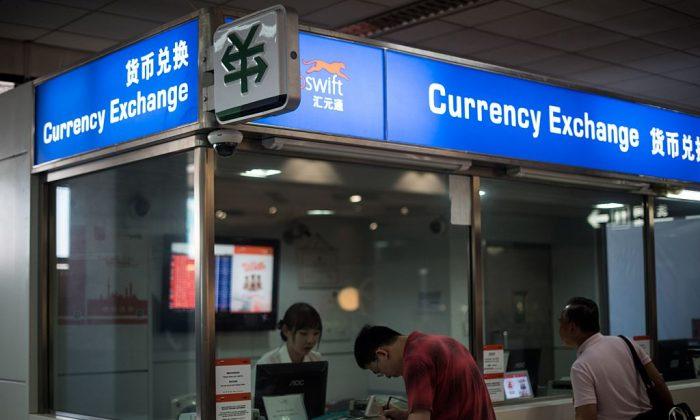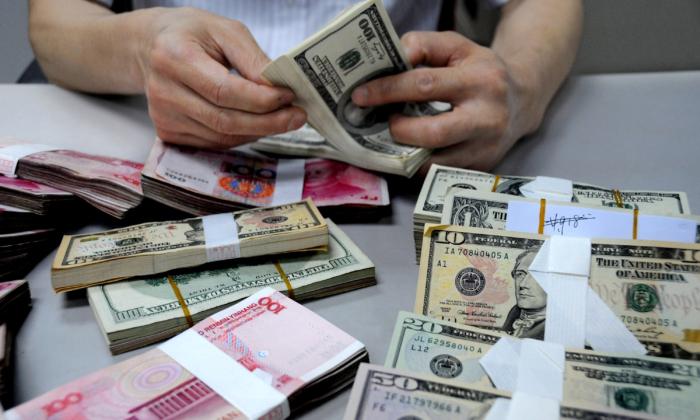A Chinese state-run media disclosed that China’s continued reliance on chip imports could be “fatal” to its automotive industry and national economy.
On Nov. 23, the state-run Xinhua News Agency reported that China’s domestically produced automotive chips are primarily used in less complex vehicle components such as body electronics, while it relies heavily on imports for advanced chips used in complex vehicle features such as electronic stability control, in-vehicle networks, and advanced driver assistance systems.
The report said that China’s “heavy reliance on import channels [for advanced chips] could fatally endanger its auto industry and national economy.”
In the 2021 China Auto Forum held in June, China Association of Automobile Manufacturers (CAAM) chief engineer Ye Shengji said that China’s self-sufficiency in semiconductors is about 15 percent, of which automotive chips are less than 5 percent.
A recent automotive industry report by market research company EMIS showed China’s fully electric vehicle sales in the second quarter of 2021 saw a 183.8 percent increase over the same period last year. While hybrid vehicle sales also saw a 99.7 percent year-on-year increase. As the country’s new electric vehicle market expands, the demand for advanced automotive chips continues to rise.
Chip Hoarding
“[Chinese] distributors are stockpiling chips for price-driven reasons. The chips can be found selling on many online platforms [in China],” CAAM deputy secretary-general Li Shaohua said during an interview with Chinese magazine China Auto Pictorial in April. “In the coming months, car production and sales will depend entirely on the chip supply,” Li told the Beijing-based newspaper Securities Daily on Sept. 10.According to the state-controlled National Business Daily, once a chip distributor finds out it has a temporary monopoly on a particular chip, it will immediately stop shipping, hoard it, and wait for the chip to be sold at a better price. This common practice in China continues to disrupt the chip market domestically and abroad.
However, the general manager of China’s National New Energy Vehicle Technology Innovation Center, Yuan Chengyin, believes that chip stockpiling is a minor contributing factor to the overall chip shortage. “Despite that, chip hoarding in the supply chain does exist in China,” Yuan added.
Taiwan Semiconductor Manufacturing Co., or TSMC, is the world’s largest contract manufacturer of semiconductor chips. Its clients include Apple, Intel, Qualcomm, AMD, and Nvidia.
Chip Smuggling
In addition to hoarding, chip smuggling incidents have been prevalent in China since the early 2000s.In 2006, Shenzhen authorities caught smugglers moving 120,000 chips through underground tunnels. In June 2008, Guangzhou authorities seized $12.8 million worth of integrated circuit chips in a smuggling case, according to the state-owned China Business News.
The tricks of smuggling apparently have become more advanced in recent years.
In January 2021, Guangdong authorities seized approximately $1.44 million worth of semiconductor-related goods smuggled from Hong Kong to Guangdong through drones, according to Xinhua News. In July, two bus drivers were caught—with chips wrapped around their bodies—attempting to enter customs through the Hong Kong-Zhuhai-Macau Bridge, according to the National Business Daily.
China’s Auto Exports Grew Despite Global Decline
The global automotive chip shortage has heavily impacted Germany as well as Japan and the United States, the top three auto exports in 2020.Despite the global decline in vehicle exports, China’s auto exports appear to have grown in a positive trend. According to statistics released by China’s General Administration of Customs, the total vehicle exports from January to November saw a 101.9 percent increase, and sales were up 124.3 percent compared to the same period last year.
In October, China Auto Pictorial published an article claiming that China has “unique advantages” in auto exports amid the global chip shortage. The question is, are these advantages “importing, hoarding, and smuggling” chips? How long will it last by relying on these methods?





